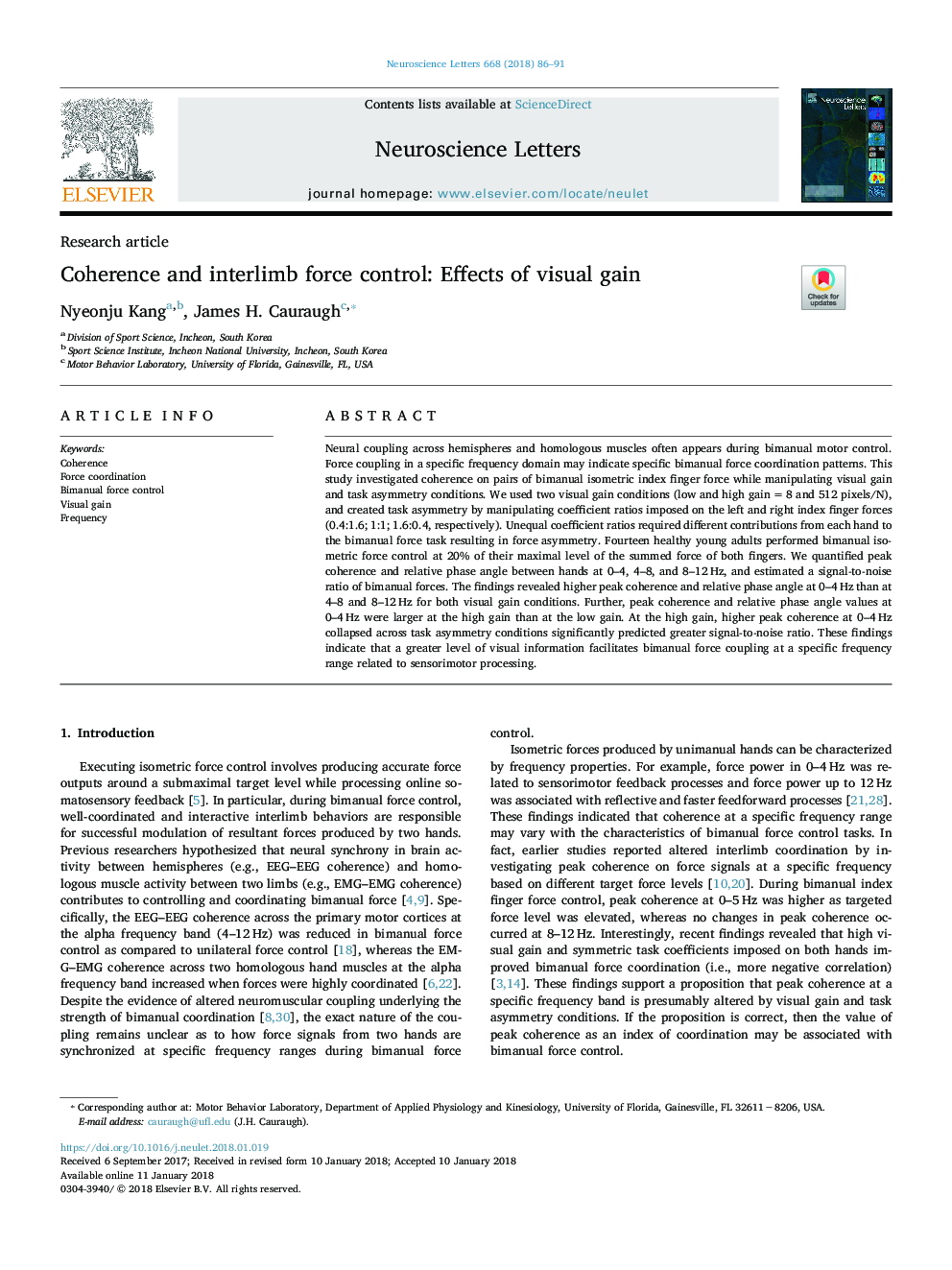| Article ID | Journal | Published Year | Pages | File Type |
|---|---|---|---|---|
| 8841757 | Neuroscience Letters | 2018 | 6 Pages |
Abstract
Neural coupling across hemispheres and homologous muscles often appears during bimanual motor control. Force coupling in a specific frequency domain may indicate specific bimanual force coordination patterns. This study investigated coherence on pairs of bimanual isometric index finger force while manipulating visual gain and task asymmetry conditions. We used two visual gain conditions (low and high gainâ¯=â¯8 and 512 pixels/N), and created task asymmetry by manipulating coefficient ratios imposed on the left and right index finger forces (0.4:1.6; 1:1; 1.6:0.4, respectively). Unequal coefficient ratios required different contributions from each hand to the bimanual force task resulting in force asymmetry. Fourteen healthy young adults performed bimanual isometric force control at 20% of their maximal level of the summed force of both fingers. We quantified peak coherence and relative phase angle between hands at 0-4, 4-8, and 8-12â¯Hz, and estimated a signal-to-noise ratio of bimanual forces. The findings revealed higher peak coherence and relative phase angle at 0-4â¯Hz than at 4-8 and 8-12â¯Hz for both visual gain conditions. Further, peak coherence and relative phase angle values at 0-4â¯Hz were larger at the high gain than at the low gain. At the high gain, higher peak coherence at 0-4â¯Hz collapsed across task asymmetry conditions significantly predicted greater signal-to-noise ratio. These findings indicate that a greater level of visual information facilitates bimanual force coupling at a specific frequency range related to sensorimotor processing.
Related Topics
Life Sciences
Neuroscience
Neuroscience (General)
Authors
Nyeonju Kang, James H. Cauraugh,
